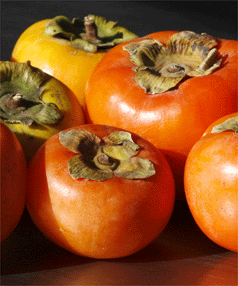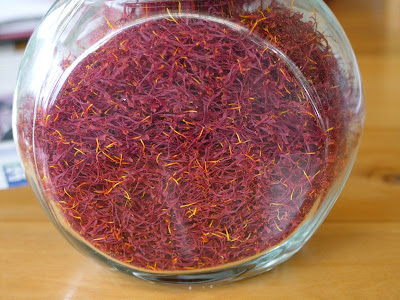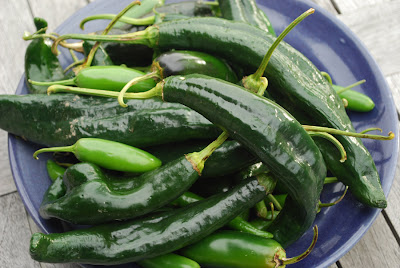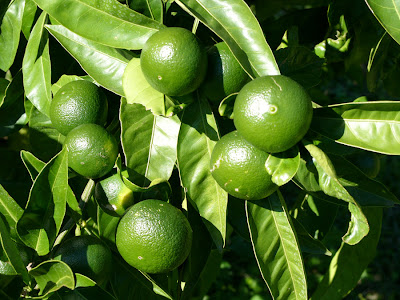
Photo: marion van Dijk
Bright orange and shiny, persimmons remain a mystery to many. Now is the time to demystify them as they come into season in late autumn and early winter.
A lime-green bowl of glossy orange persimmons look great in your kitchen but they should be much more than just decorative.
Persimmons have been a major feature in the diet of Asian countries for centuries, yet they are neglected here and should rightly hold a place in the delights of autumn. They are of the genus Diospyros, fruit of the gods, from the ebony wood family. The tree has elegant wide spreading arms and, as autumn approaches, the leaves turn vibrant colours. They fall from the tree to reveal the fruit that mirrors the changing leaf colours - first green, then apricot, and finally orange.
There are principally two types of persimmon that feature in New Zealand. One variety is astringent and the other non-astringent. The different persimmons contain varying nutrients but they are generally rich in vitamins A, B and C and contain calcium and iron. They can be eaten raw, cooked or dried.
The astringent persimmon, the hayica, is heart-shaped with a point on the bottom. The fruit can only be eaten when it is completely ripe as the tannins in it make it bitter until it ripens. When ripe, the fruit becomes soft and jelly-like and lovers of it say that spooned into fruit salad it fills in the spaces. Mixed with yoghurt and other fruit it is delicious as a smoothie. It also makes a great pudding, a favourite in California.
To prepare the fruit, wash it, remove the leaves, cut in half, remove the seeds and scoop out the soft flesh.
The non-astringent persimmon, the fuyu, is flatter and wider than the hayica and has a delectable crunchy texture. It should be eaten while still firm and is generally consumed raw.
Some aficionados say fuyu persimmons have the taste of honey and apricots and they combine well with a range of savoury and sweet accompaniments.
You can replace tomatoes in a salad with fuyu persimmons and, combined with spinach and balsamic vinegar, they make a wonderful salad.
Prepare the fruit the same as the hayica but remove the core before slicing it into whatever shape you wish. The skin can be removed or eaten.
Persimmons should be bought just as they are ripening or stored at room temperature until they are ripe, and then should be stored in the fridge. They don't keep well, so eat soon once they are ripe.
Don't buy bruised fruit without leaves. When the fruit is ripe it has a smooth and glossy surface and a bright colour.
Persimmons freeze well - either the flesh of the hayica or whole fruit will keep for months in the freezer.
Here are some more recipes.
PERSIMMON AND FENNEL SALAD

Photo:Marion van Dijk
2 fennel bulbs
3 fuyu persimmons
Juice of 2 lemons
3 Tbsp of good quality extra virgin olive oil
100g of a good blue cheese
Prepare the fennel bulb by washing well and discarding any damaged parts. Finely chop the bulb and the feathery green fennel herb at the top of the plant. Peel the persimmons, cut in half and remove the cores. Slice thinly and add to the fennel. Pour over the oil and lemon juice, season with salt and pepper, gently toss the salad and top with crumbled blue cheese.
Ad Feedback
PERSIMMON CORIANDER SALSA
2 fuyu persimmons, peeled and finely chopped
1 Tbsp of lime juice
1 jalapeno chilli, finely chopped
1/2 red onion, finely chopped
Combine all the ingredients and serve with grilled pork tenderloin or duck breast.
PERSIMMON PUDDING
75g butter
3 eggs
340g hayica persimmon pulp
340g flour
170g honey
2 tsp baking powder
1 tsp cinnamon
1/2 tsp nutmeg
1/4 tsp ground cloves
1/3 cup milk
1 cup chopped almonds
1 cup raisins
Cream butter. Add eggs one at a time, then add persimmon pulp and honey. Sift dry ingredients and mix in. Stir in milk and add nuts and raisins. Pour into a greased 25cm dish and bake at 150 degrees Celsius for 40-50 minutes. Serve with whipped cream.














 Photo:Marion van Dijk Nelson Mail
Photo:Marion van Dijk Nelson Mail











 photo Nelson Mail
photo Nelson Mail









